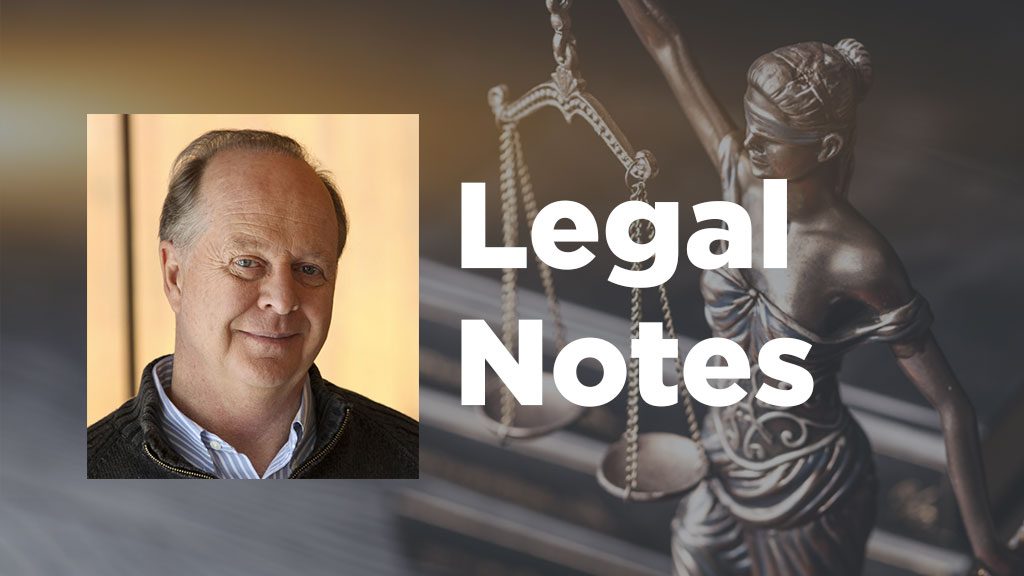The use of virtual court hearings during the COVID-19 pandemic has proven very efficient. In many ways, the legal process has, in fact, been more effective than before. For example, experts can now provide testimony and evidence that distance and logistics might have otherwise made too costly for either the complainant or defendant.
Although seen as a positive development overall, the courts are understandably strict about how legal representatives, their clients and witnesses present themselves. Typically, the complainant and defendant each sit in separate rooms with their own video and audio feed. Legal representatives are also separated from their clients, as are any witnesses. One obvious reason is to prevent coaching or witness tampering that might go unseen or unheard.
Recent rulings have shown that courts have little tolerance for any abuse of this process. Sahil Shoor, a partner with Gowling WLG, cites a recent case when an applicant in a commercial dispute suspected possible off-camera manipulation by the respondent.
“During the cross-examination, the applicant, his lawyer, and the court reporter were in separate locations. By contrast, the respondent, his lawyer, and an interpreter were all in one boardroom,” he explains.
After the respondent was cross-examined, however, the applicant became aware that others were also in the room beyond the three individuals originally identified. The interpreter confirmed to the court that, in fact, there were indeed others present at the time. In reaction, the applicant’s legal representative moved that the respondent’s testimony be struck, claiming this conduct during the cross-examination was an abuse of process.
The court agreed and granted the motion to strike the respondent’s affidavit.
Shoor offers a number of steps that can maintain the integrity of virtual proceedings.
“Prior to, and at the end of questioning a witness, an examiner should ask that witness to identify anyone else in the room with them and identify what materials they have in front of them (including materials that might be on an electronic device). If a witness looks distracted during examination, consider asking these questions again.”
Christopher Selby, Layne Hellrung, Stephanie Mills of Cassels Brock & Blackwell LLP further suggest counsel could request the camera be panned around the room to reveal those who might be present.
Coaching off-camera or not fully declaring those in attendance during an out of court hearing are not the only challenges in today’s world of virtual hearings. There is also growing concern that documents and emails presented as evidence might be altered or even forged.
“In pursuit of fair and just outcomes, judges must assess the reliability and credibility of the evidence,” writes Adam Black of Torkin Manes LLP. “In a world of deep fakes and artificial intelligence, that task is made immeasurably more difficult.”
Black references a child custody dispute that drew the attention of Justice Heather McGee of Ontario’s Superior Court of Justice after a high level of forged evidence presented by the applicant was exposed.
The implications of Judge McGee’s remarks concerning “forged” and “bogus” documents could equally apply to commercial disputes.
“In an era of ‘fake news’ it should come as no surprise that from time to time, courts will be presented with fake evidence,” Judge McGee wrote.
Black adds his concerns regarding the challenges of virtual hearings and the matter of witness coaching.
He quotes Andrew Chris, lawyer for the respondent in the above case who said, “With most trials currently taking place virtually due to the pandemic, it is extremely difficult to ensure a witness is not being coached through electronic means while giving their evidence over ZOOM.
“This extends to documentary evidence, given how easy it is nowadays to make alterations,” Chris said. “It is incumbent on lawyers to critically review our clients’ electronic evidence before putting it into a court record.”
As Judge McGee noted in her closing remarks on her case, “In a digital landscape, spoofing is the new ‘catch-me-if-you-can’ game of credibility.”
John Bleasby is a Coldwater, Ont.-based freelance writer. Send comments and Legal Notes column ideas to editor@dailycommercialnews.com











Recent Comments